Kyanite – Mineral Properties, Photos and Occurrence
The blue blades of kyanite are important for metamorphic petrology, but they are also attractive for collectors and rarely occur in gem quality. Big accumulations of kyanite are crucial for ceramics industry.
Crystal Structure of Kyanite
Kyanite is the triclinic polymorph of aluminosilicate minerals with the formula Al2SiO5 - two others being andalusite and sillimanite. Kyanite belongs to the nesosilicates, which have isolated SiO4 tetrahedra. Most often, it occurs in long, slender groups of bladed crystals that can appear prismatic, radiating or reticulated. Occasionally, crystals may even be tabular. Kyanite is often twinned along the long axis, rarely forms V-shaped twins. As kyanite is a typical metamorphic mineral, it does not occur in open vugs – all crystals are prepared from their hostrock.
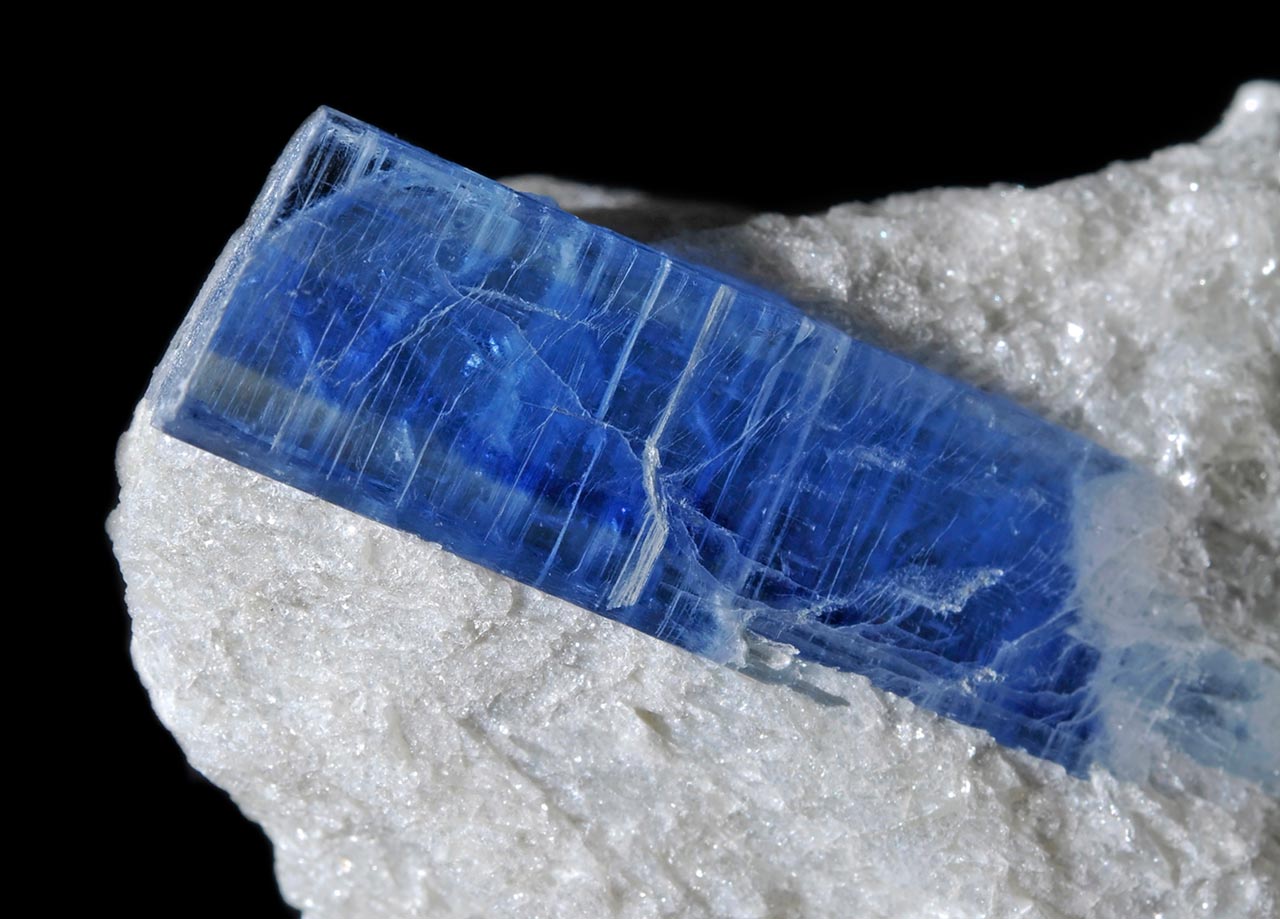
Pure theoretical kyanite is colorless, but small part of Al in the structure is replaced by iron (Fe3+), chromium (Cr3+) or rarely manganese (Mn3+) and small amount of Si can be replaced by titanium (Ti4+). The iron impurity is the common source of the blue color, the blue-green color in eclogites is caused by chromium.
Physical Properties of Kyanite
Kyanite is typically a deep blue or blue-green, but the mineral may grade into a variety of other colors like white, grey, yellow, pink or black, with or without zoning. Its color intensity is remarkable, especially when zoned, and this property, combined with exceptionally large crystals, makes it a prized collectible mineral. Orange specimens, recently found in Tanzania, owe their color to specks of included manganese. Its fracture pattern is decidedly splintery, and cleavage is perfect. Kyanite is also strongly pleochroic (trichroic).

Luster is naturally vitreous to pearly, but in the retail market, dealers are known to artificially enhance the luster by applying oils or synthetic lubricants to the surface. Its hardness is unique because of its anisotropism: testing hardness on a suspected kyanite crystal will reveal a value of 5.5 parallel to its long dimension (parallel to {001}), and 7.0 in a perpendicular dimension (parallel to {100}). Its streak is white or colorless, and its density ranges between 3.53 and 3.65.
Naming and Discovery
Kyanite was first described by Abraham Gottlieb Werner in 1789, presumably from Mt. Greiner in Zillertal Alps, Austria. However, Werner studied specimens from various localities at the same time, so the true type locality of kyanite is in fact unknown.
Werner named the new mineral Zyanit – from Greek word kyanos (blue). Later, it was anglicized to kyanite. The other common kyanite name – disthéne – was proposed by René-Just Häuy in 1801. The disthéne name also comes from Greek – di (two) and stenos (hardness).
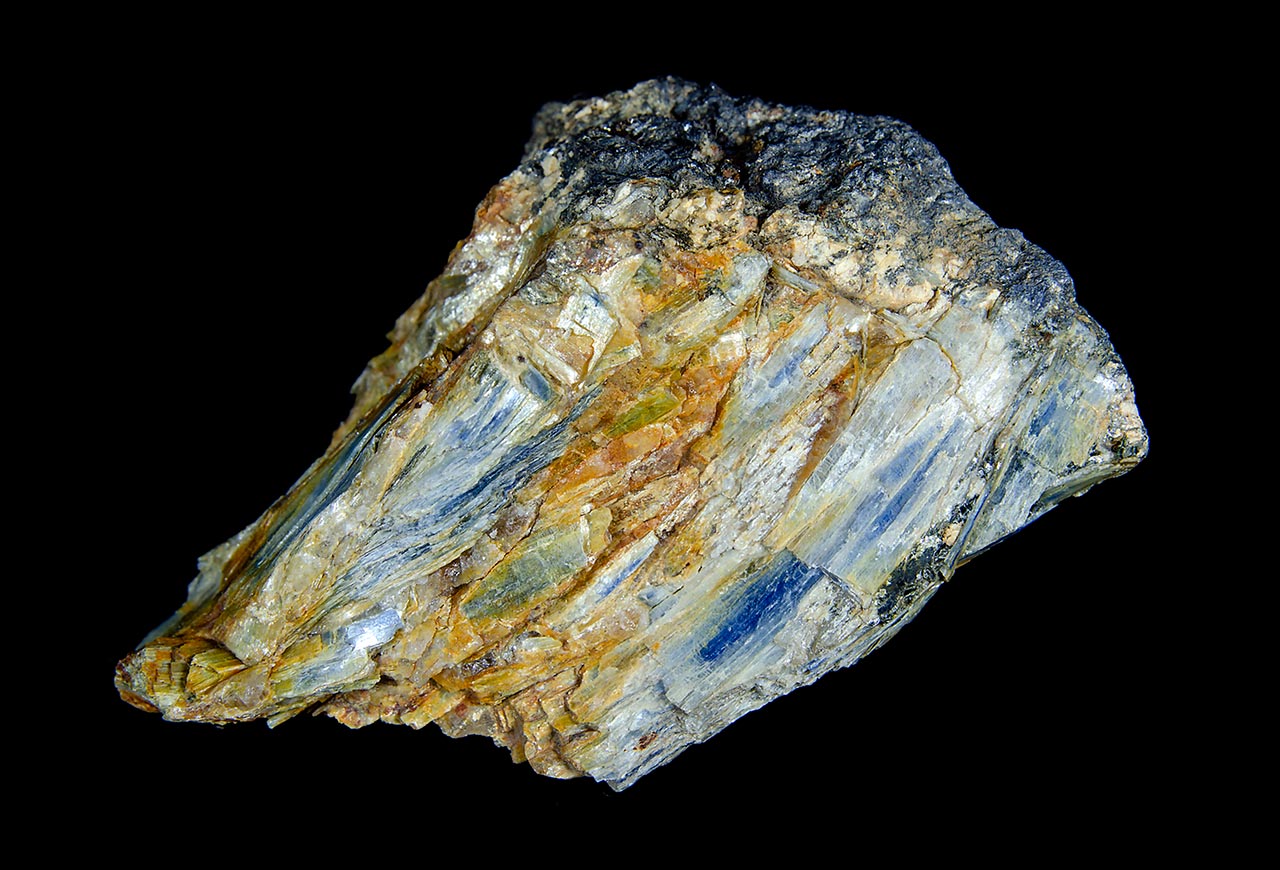
The kyanite name (spelled cyanite in French) suggests some connection to cyanide chemicals. Despite being chemically totally different, both kyanite mineral and cyanide name is derived from Greek kyanos. The cyanide was originally discovered in the form of blue ferrous ferricyanide pigment (Prussian Blue, Paris Blue, Berlin Blue). Of course, currently used reference to toxic cyanide usually means white sodium or potassium cyanide, where the reference to the blue color might look strange.
Kyanite Origin
Kyanite can theoretically form at quite low temperature and pressure, but usually clay minerals are more stable at these conditions. Kyanite is abundant in various schists, gneisses, granulites and sometimes amphibolites – generally in aluminum rich metamorphic rocks, which are formed at high pressure and usually medium to high temperature. Kyanite occurs both within the rocks itself or inside quartz lenses and veins. Other typical kyanite occurrence is in high pressure rocks called eclogites. Rarely, kyanite occurs also in some aluminum rich granites and pegmatites.
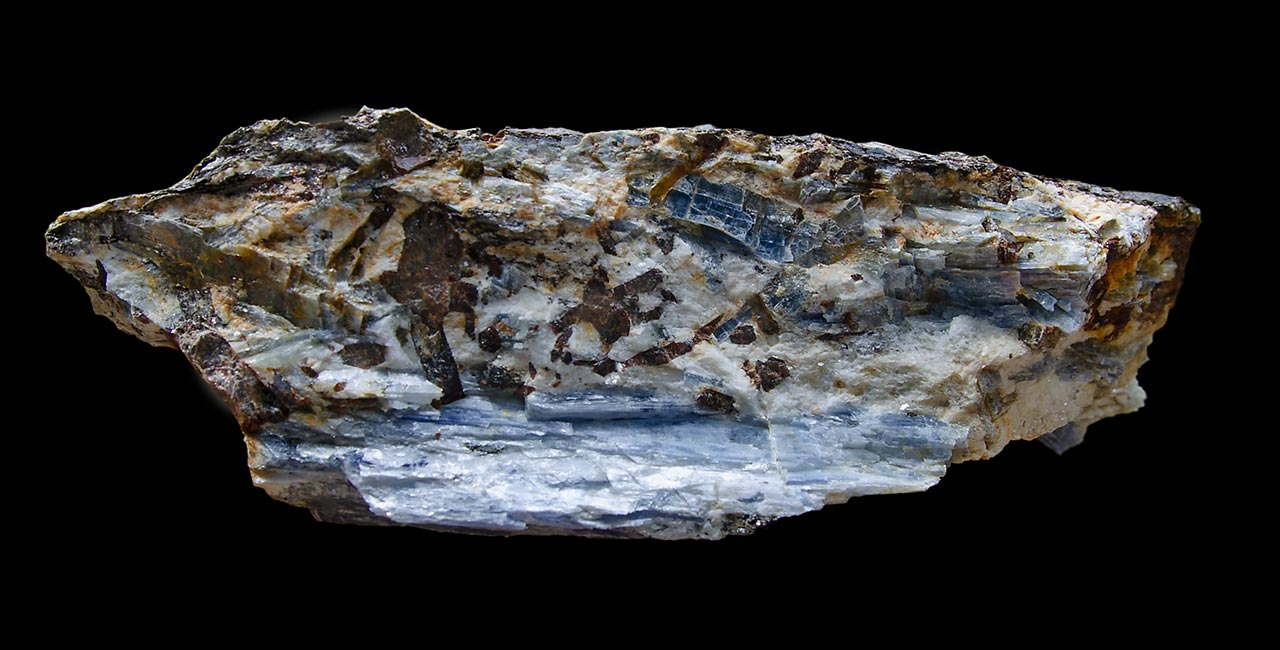
Kyanite is often associated with quartz, feldspars, micas, staurolite, less often with omphacite and pyrope (in eclogites). It is very often found together with other Al2SiO5 polymorphs – either andalusite or sillimanite – but occurrence of all three together is rare. Pseudomorphs of kyanite after andalusite are known from some localities too.
Applications
Kyanite has a high level of heat resistance, making it an ideal material for fabricating high-temperature porcelain plumbing fixtures materials, dishware, refractory bricks, kiln interiors, brake shoes, cutting wheels, grinding disks and in other abrasives. Kyanite is generally not used by itself as an abrasive; rather, it is used as a binder along with another abrasive component.
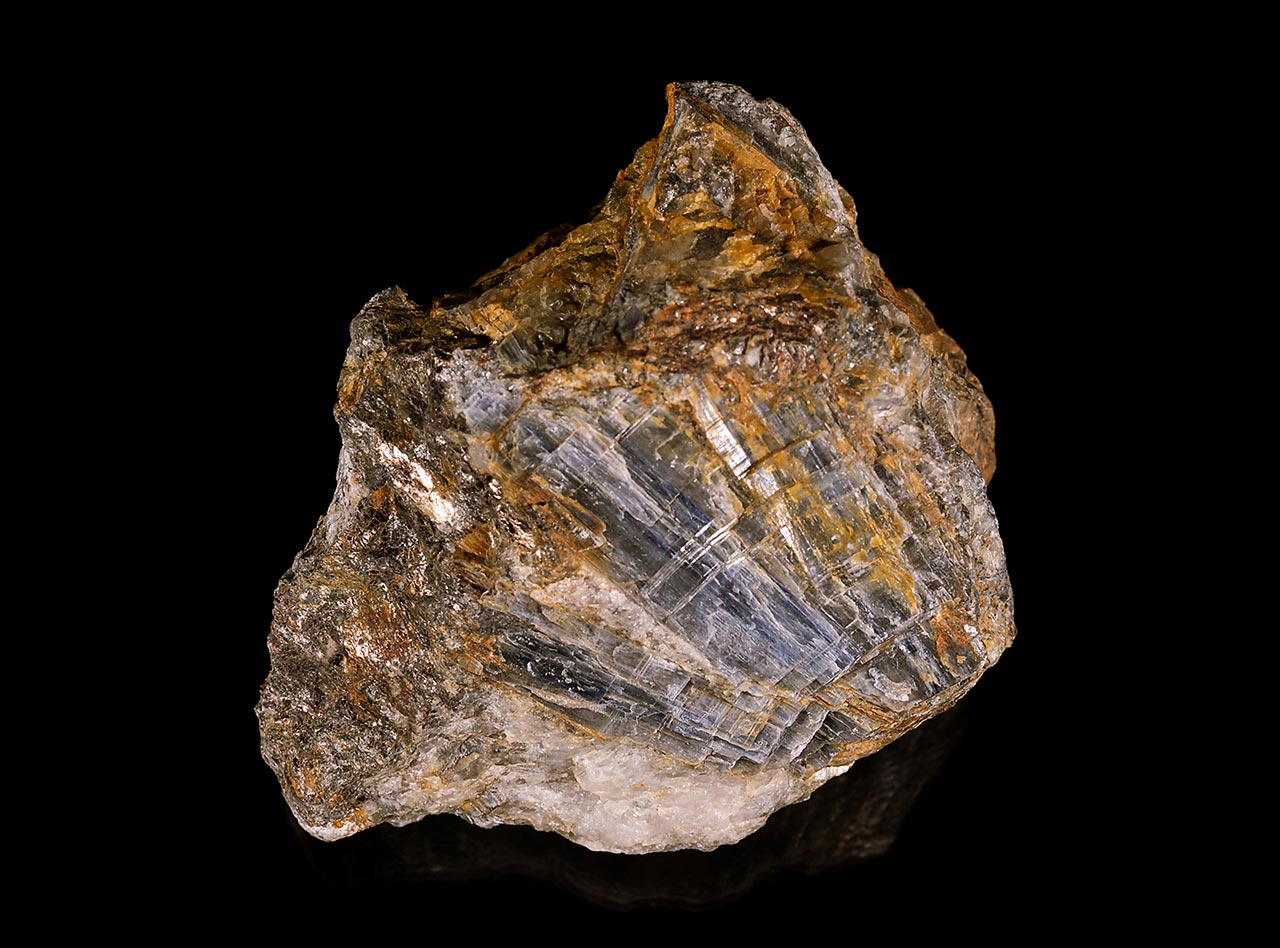
An uncommon aspect of its heat resistance is that it can expand up to twice its volume when heated. This expansion is predictable, such that specific amounts of kyanite can be added to the raw material (which would otherwise shrink when heated) to maintain the desired volume of the finished product. It is also serviceable as electrical insulators.
India is the largest producer of kyanite outside of the US, with the UK and Japan dependent on India for natural supplies. (see Andalusite, Applications chapter for more on mullite).
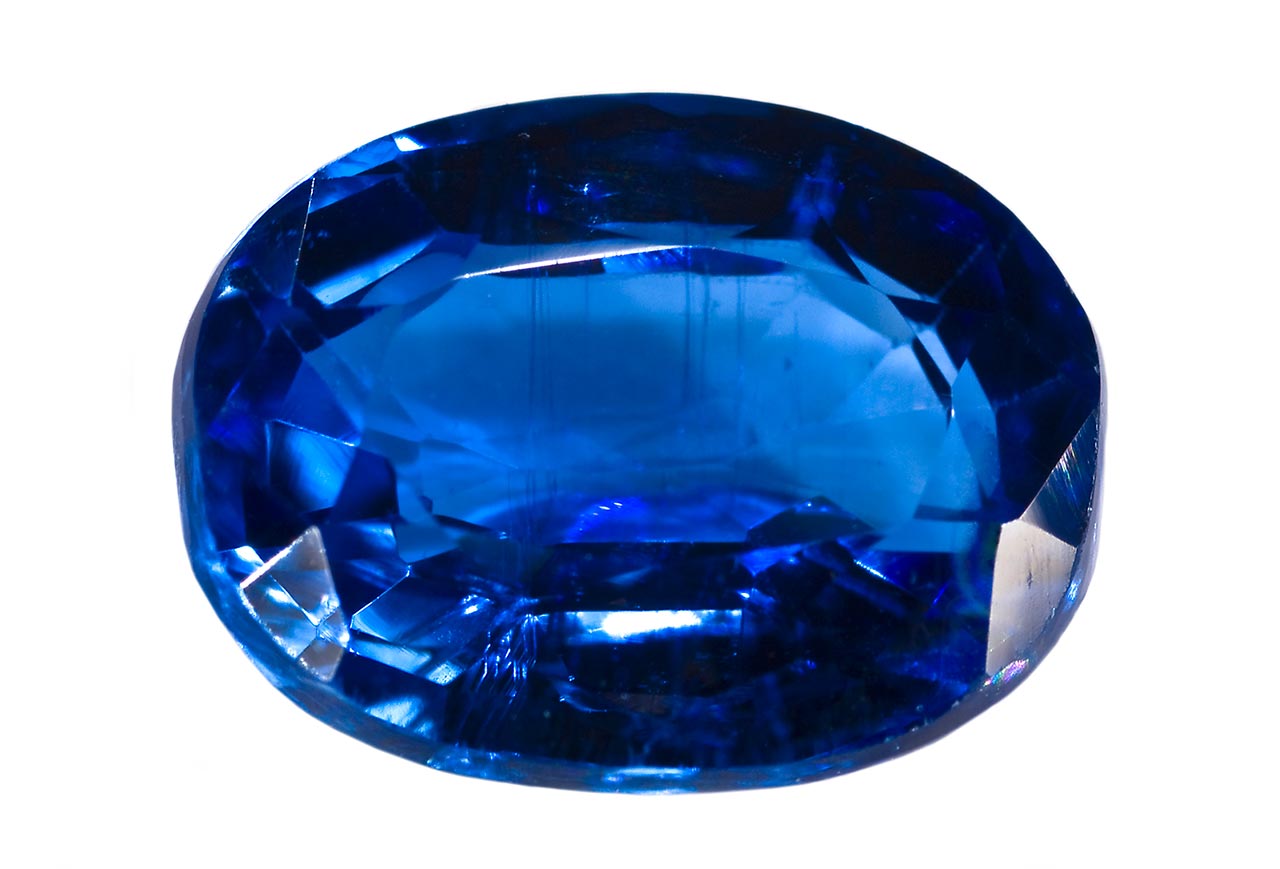
Kyanite has some appeal as an exotic gemstone, by virtue of its suitability for faceting into small objects or polishing into beads. It is, however, not often used. Some gem specimens are characterized by chatoyancy (cat’s eye, from the French oeil de chat), referring to the property of an enhanced optical reflectance or luminous streak produced by an alignment of fibers or inclusions within the matrix of a mineral. To be observed, the base of the gemstone needs to be cut parallel to the fiber direction.
Occurrence of Kyanite
Kyanite is very widespread mineral, as it is typical for most regionally metamorphosed areas and occurs also in many eclogites. Following list is just an incomplete selection of interesting localities:
Brazil is probably the main source of the kyanite specimens, widely available on the market: Large blue crystals from Barra do Salinas and crystal groups from São José da Safira, both in Minas Gerais. Nice gemmy crystals with blue center and green outer rim were found in Vitória da Conquista, Bahia, Brazil. Many common Brazilian pieces were prepared from quartz.

The classic European locality in Switzerland is Pizzo Forno (sometimes also labeled as Chironico or Alpe Sponda) in Kanton Ticino. Excellent fine and soft paragonite-rich hostrock contains quite large and pale to deep blue crystals, sometimes even gem quality. Kyanite is often associated with nicely shaped dark staurolite. Other Swiss locality is mentioned in Gotthard Massif, just a little to the north from Pizzo Forno, with very similar looking specimens. There are numerous occurrences of kyanite all over the Alps, from Italy and France to Austria.

Outside Alps, numerous kyanite localities are in Czech Republic. These kyanites usually do not reach deep blue color but can form in impressive size. Classic localities are Frymburk or Pancíř in Šumava Mts. and Vrtěříž, Kovářová and Ústup u Olešnice in Vysočina region. Another fertile region is Norway. Just Nordland hosts dozens of localities around Fauske, Narvik or Mo-i-Rana, some of these include quartzites with up to 15% kyanite content. Other famous occurrences include Hasvik and Skibotten in Finnmark and Selbu in Oppland. Most of the specimens are rich bladed pale to medium blue kyanite, usually in quartz.
Famous Russian locality in Southern Urals is Borisovskie Sopki, where nice blue-green kyanites up to 15 cm large were found in fine grained mica matrix. Nepal hosts couple operating kyanite mines, some even yielding gemmy kyanites, namely in Jajarkot and Aachham districts.
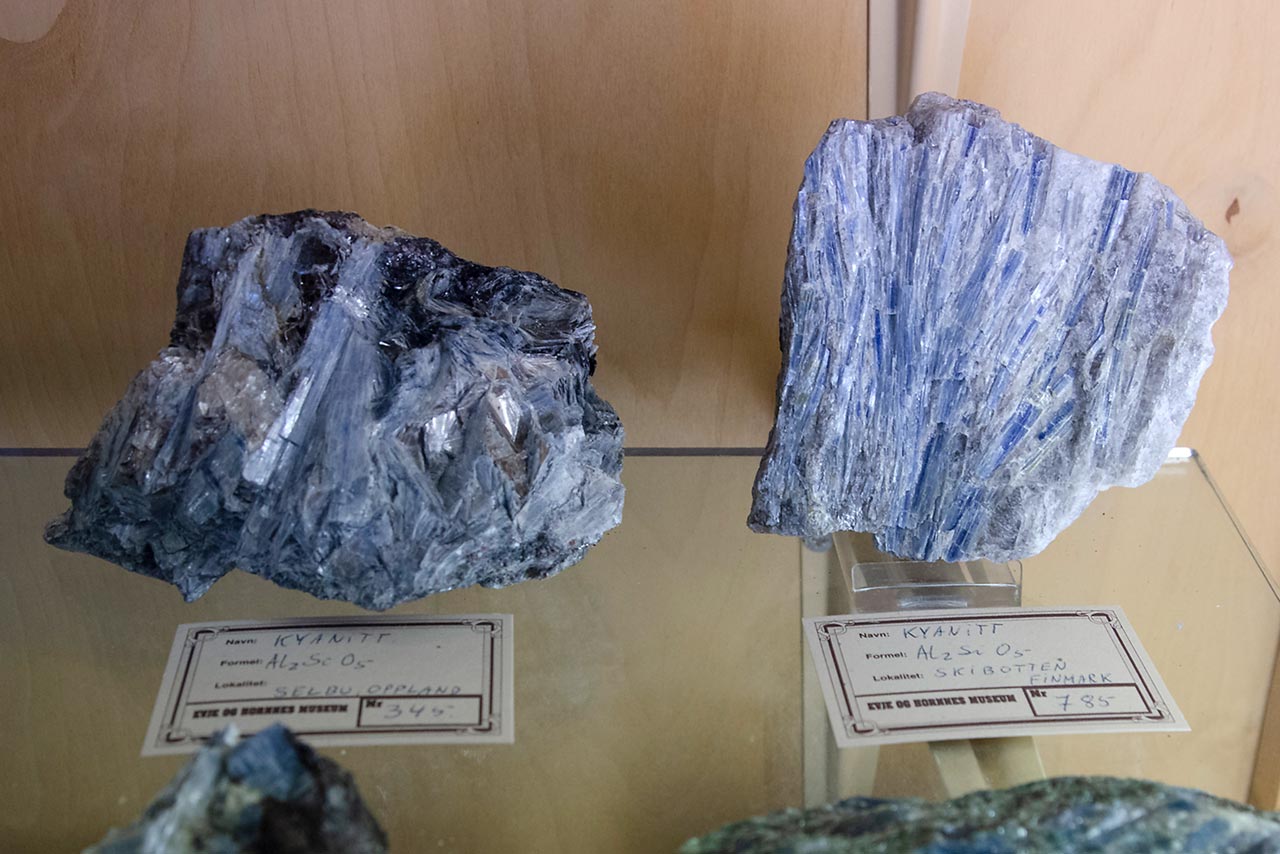
Very unusual orange kyanite originates in Nani, Loliondo, Arusha Region, Tanzania. These specimens are colored by manganese, unlike the normal kyanite. And unlike most kyanites, the specimens from Arusha are sometimes twinned into V-shape twin instead of parallel twinning along c-axis of the crystal. Umba Valley in Kenya yielded large, deep-colored teal crystals.
Deep teal to green-blue kyanites, sometimes gemmy and reaching impressive size up to 30 cm, are found in Harts Range, Northern Territory, Australia.

There are also numerous kyanite localities in the USA: Interesting is occurrence of kyanite in Meeper Mine and Thomas Mine, Buncombe Co. in North Carolina – these are kyanite-bearing pegmatites. Some huge kyanite crystals even 60 x 8 x 2 cm large were referenced from these localities! Classic blue kyanite in quartz comes from Judds Bridge, Roxbury, Litchfield Co. in Connecticut. Kyanites in almandine and staurolite rich schist are found in Wissahickon Valley, Philadelphia Co., Pennsylvania. Other places include Baker Mountain, near Cullen, Prince Edward Co. and Willes' Mountain, near Dillwyn, Buckingham Co., both in Virginia.





Comments